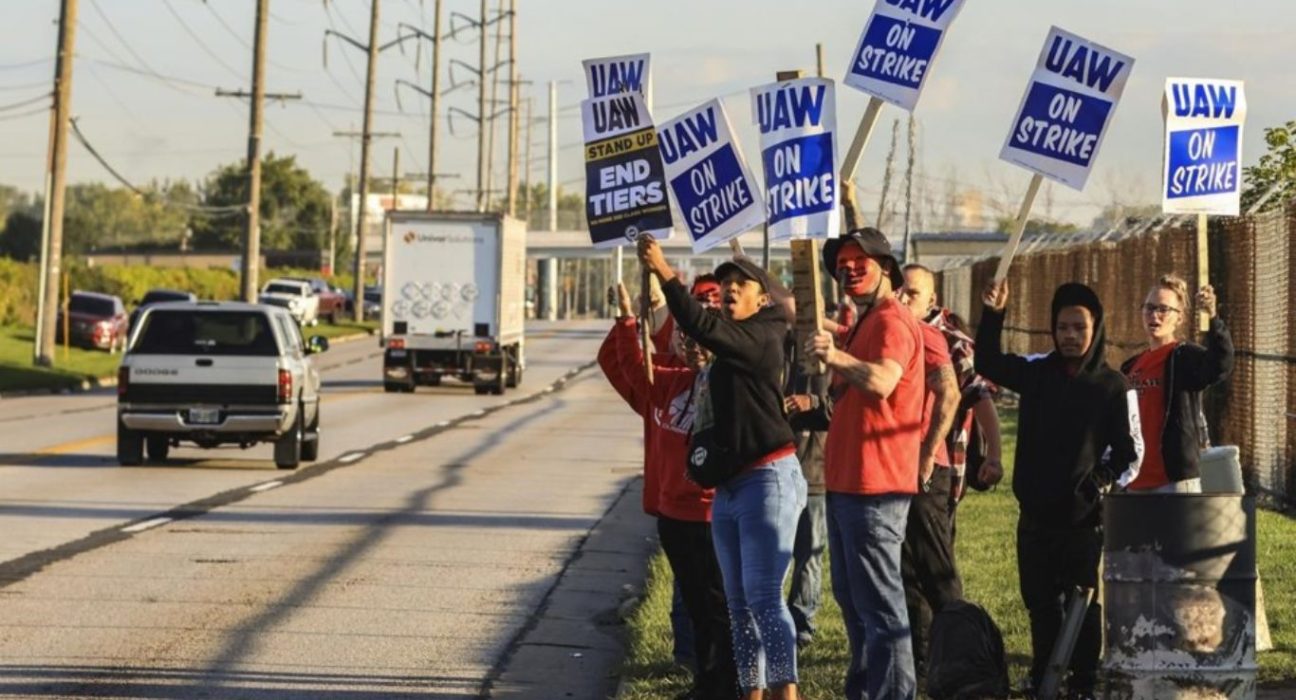United Auto Workers’ Historic Strikes Disrupt Auto Giants
In a historic move, the United Auto Workers (UAW) has launched simultaneous strikes at three major automotive giants: General Motors (GM), Ford Motor (F), and Stellantis (STLA), parent company of Chrysler. This ambitious industrial labor action marks a significant turning point in labor relations within the American automotive industry, with far-reaching implications for both the companies and the workers involved.
Introduction
The UAW’s decision to initiate these strikes, the first of their kind in decades, has already begun to disrupt the operations of these auto giants. Initially targeting production facilities for the Ford Bronco, Jeep Wrangler, and Chevrolet Colorado, these strikes are now creating a ripple effect that extends beyond the intended targets.
The Domino Effect
Interconnected Production Systems
One of the key aspects of these strikes is the intricate web of interconnectedness within the automotive industry’s production system. This interconnectedness is now proving to be a double-edged sword, with the UAW’s targeted strike strategy impacting facilities not directly involved in the work stoppage.
The Significance of the Strikes
The UAW’s strategic decision to strike simultaneously at GM, Ford, and Stellantis speaks volumes about the current state of labor relations in the automotive industry. These strikes are not merely isolated events but a collective action that underscores the power of labor unions in a sector that has seen its share of labor disputes over the years.
The Affected Models
Initially, the strikes disrupted the production of some of the most popular and profitable models for these automakers, including the Ford Bronco, Jeep Wrangler, and Chevrolet Colorado. This has had immediate consequences for the companies’ bottom lines, with production delays and potential financial losses looming on the horizon.
The Expanding Impact
Beyond the Targeted Models
As Ford pointed out in a statement, the UAW’s targeted strikes are causing a ripple effect that extends to facilities not directly involved in the work stoppage. This is due to the highly interconnected nature of the automotive production system, where parts and components from various plants come together to create a finished vehicle.
The Interconnected Production System
To understand the expanding impact of these strikes, it’s essential to grasp how closely intertwined the production processes are within the automotive industry. A disruption at one plant, even if it’s not the primary target, can have cascading effects throughout the entire supply chain.
Supply Chain Disruptions
The strikes have already resulted in shortages of crucial components, causing delays and production stoppages at other facilities. This, in turn, affects not only the production of the targeted models but also the broader portfolio of vehicles produced by these automakers.
The Broader Implications
Labor’s Power and Industry Future
Beyond the immediate disruptions to production, these strikes have raised several important questions about the future of the automotive industry and the power dynamics between labor and management.
Labor’s Assertive Stance
The UAW’s simultaneous strikes underscore the resurgence of labor unions in the United States. In recent years, unions have been regaining their footing and advocating for better wages, benefits, and working conditions. These strikes serve as a potent reminder that organized labor can still exert significant influence.
Company Responses: As the strikes continue, the response of GM, Ford, and Stellantis will be closely scrutinized. Negotiations are expected to resume, but the outcome remains uncertain. How these automakers address the concerns raised by the UAW will shape their labor relations in the years to come.
Conclusion
The UAW’s historic strikes at GM, Ford, and Stellantis have sent shockwaves through the automotive industry. As production disruptions spread beyond the targeted models, the broader implications for labor relations and the industry’s future are becoming increasingly clear. These strikes are a stark reminder that, in the interconnected world of auto manufacturing, labor’s power cannot be underestimated.










